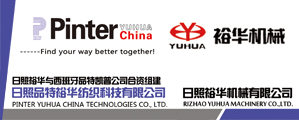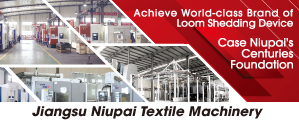Textile Industry in 2012: Strive to Grow Steady Reduce Operational Risks
May 07, 2012 | by
Overview in 2011
In the year 2011, the major indexes of China’s textile economic showed a rapid growth, maintaining a steady trend against various risks and pressures that increased significantly over the previous year due to the fact that the international market is continually depressing; the price of raw materials is fluctuating while production costs continue to rise; financing environment is tightened. Small micro-enterprise is confronting great difficulties in operations particularly when export volume and industry profits present a downward trend.
According to the statistics by NBS of 2011, as for the 36000 designated sized textile and apparel enterprises, the total industrial output realized 5478.65 billion yuan, saw a growth of 26.8% comparing with 2010, however the speed down by 4.8% as comparing with the first season; the sales reached 5360.17 billion yuan, witnessing a year-on-year rise of 26.86% while a drop of 4.6% against the first season. In terms of different textile and apparel products, the chemical fibers reached an output of 33.624 million tons, increasing by 13.9% year-on-year, and a drop of 4.1 percentage point comparing with the first season. Besides, the yarn, cloth and apparel realized an output of 28.945 million tons, 6.198 million meters and 25.42 billion pieces, representing a year-on-year rise of 12.4%, 11.6% and 8.1%, while a percentage point drop of 0.1, 7.8 and 6.5 as comparing with the first season respectively.
The investment (fixed assets investment above five million yuan) reached 679.91 billion yuan, increasing by 36.3% year-on-year respectively, while the speed down by 2.2% as comparing with the first season.. The industry profits realized 295.642 billion yuan, saw a growth of 25.94% comparing with the last year; however, the speed down by 27.63 and 15.31 percentage points respectively as comparing with the first season and the first half year.
According to the customs statistics in 2011, the export of textile and apparel totalized 254.12 billion USD, representing an increase of 19.9% year-on-year. As comparing with the end of April, the growth speed down by 7.2%.Correspondingly, the export value represented an uptrend due to the increasing export price. The export price of textile and apparel witnessed a year-on-year rise of 19.3% while the export volume only increased by 0.5% comparing with last year.
The CNTAC’s statistics of important industrial clusters shows that those enterprise with an annual sale below 20 million yuan, the income of enterprise sales and profits sees a rise of 6.71% and 9.9% respectively, which is far behind the growth level of above-designated sized enterprises, In addition, the growth speed of total profits only saw a rise of 4.7% among the 9 industry clusters which accounted for more than 20% of the garment export.
Trend Analysis in The First Half of 2012
In the year 2012, the whole textile and apparel industry sees a stable development as estimated. But China’s textile industry is till confronted with a complicated external environment and series of risks in terms of slowing international market demand, soaring raw material price, tightening monetary policy and so on, which exerts great pressure on the development of textile and apparel industry. Reduced orders, insufficient staff, tightened funds and transformation difficulties give great challenge to small micro-enterprises which need to be paid more attention to by the government and industry. To sum up, the textile and apparel industry should make great efforts to accelerate market transformation and upgrading, reduce operational risks to realize economic development with national policy support.
European Debt Crisis
European Debt crisis escalation in EU makes obvious negative impact on the international market demand, leading to a weak and chronic economic recovery in the United Stated, Europe and other developed countries is still weak. High unemployment, deterioration of the employment structure and depressed consumption confidence restrict the demand for textile and garment, which slows down the clothing export growth and demand for related industrial chain in the developing countries.
It is expected that in the first half year of 2012, China’s textile and garment export demand and competitive pressures will become more prominent, the export volume will be lower or in a negative growth.
Domestic Consumption Market
The first half of 2012, the textile industry will continue to assume a main trend of the domestic consumption market. However, the growth speed of social investment and export economic is slowing down. With the fact that the adjustment of economic structure, the macroeconomic growth rate is expected to come down, the growth speed of consumption may experience a downward trend compared the last year, which will decrease the growth speed of clothing consumption directly.
Domestic Cotton Market
Domestic cotton market is confusing. If the national reserved cotton is offered at an auction level of cost plus profit, price of domestic cotton will be raised way up against foreign cotton, making the international competitiveness of textile enterprises further weakened. Chemical fiber price maybe experience ups and downs accompanied by fluctuating cotton price and oil price, which will enhance the operation risks of downstream enterprises.
Labor Costs
The labor costs of textile enterprises increased obviously. Sampling shows more than 80% enterprises face the shortage of laborers, and salaries have been increased above 15%. Corporate labor costs are showing a rigid upward trend as a result of recruitment difficulties, and improved workers’ living conditions, etc.
Financing
Small and medium-sized textile-enterprises are still facing poor financing, high financing costs, and the instability of the order volume. Under the conditions of RMB revaluation, the anti-risk ability is weak especially for export processing enterprises. Once these enterprises shut down in avalanches, it will affect the employment and social stability directly.
Policy Recommendations and Industry Measures to Ensure Stable Operation of the Industry
Policy Recommendations
1. Stabilize the domestic cotton market. Currently, the domestic cotton price is far from the overseas, and the international cotton resource is sufficient. Great opportunity should be seized to expand the cotton imports, to reduce the cost of textile cotton. Financial subsidy should be taken to balance the price when the reserved cotton is sold out at an appropriate time.
2. Reduce the cost of bank loans. It is recommended that regulatory authorities should standardize the bank floating rate, cancel acceptance draft system, and rectify the order of the bank loan operations to solve the financing problems of SMEs, making sure that the support policies of the Central Committee are fully implemented to the letter.
3. Reduce the enterprise tax burden. “High taxation and low deduction” have troubled cotton textile industry for a long time, which should be solved to ease the cost. Replacing Business Tax by VAT can be expanded to the productive service field of textile industry. A certain percentage of wages is allowed to be deducted from the corporate income tax, considering the contribution of labor intensive industries.
4. Implementation of support policies for SMEs. The support policies of the State Council for tax, financial, technical innovation of small and micro-enterprises should be fully implemented. Accelerate the construction of industrial innovation platform, the public service system and industry alliance to benefit the SMEs.
5. Support Enterprises to “Going Global”. Competitive enterprises should be encouraged to build raw material base, R&D centers and purchasing brand department in foreign countries. Low-end manufacturing and processing enterprises built in foreign countries should be strengthened with marco guidance to prevent excessive relocation, reducing the impact on domestic employment.
Industry Measures
1. Deepen enterprise management, improve labor productivity. Faced with the recruitment difficulties and labor costs, basic management and application of information should be enhanced to improve labor productivity and reduce production costs.
2. Accelerate technical transformation, promote advanced level of equipment. Speed up the technological transformation and innovation and the R&D of high-end textile machinery to ensure the share of domestic equipment. Appropriate introduction of foreign advanced equipment to accelerate the absorption and further innovation of new technologies.
3. Strengthen the development of new products, higher valued-added products. Strengthen R&D and industrialization of high simulation, functional, high-tech fiber materials and industrial textiles. Develop individuation, fashion-orientation, low-carbon green textile and consumer goods, increase the added value.
4. Strengthen independent brand building, optimizing marketing pipes construction. Promote the industrial chain of advanced brand enterprise, and expand to the high-value-added aspects such as brand and marketing as soon as possible by the acquisition and integration of foreign brands.
5. Use financial instruments to resist the foreign exchange market risk. Guide the enterprises to use constantly enriched and developed foreign products by appropriate financial instruments.
6. Increase market development, reduce trade conflict. Continue to run the exhibition of the domestic industry and participate in international exhibitions actively. Strengthen tracking and monitoring of important export markets.
In Conclusion
Textile enterprises should pay greater efforts in responding to rising labor costs, fluctuating raw material price, soaring energy power price and other factors like these. However, for the external environment problems such as cotton, finance, taxation and exchange rate, enterprises can not deal with them by themselves, which are in urgent need of great attention and support promulgated by the state policy.








